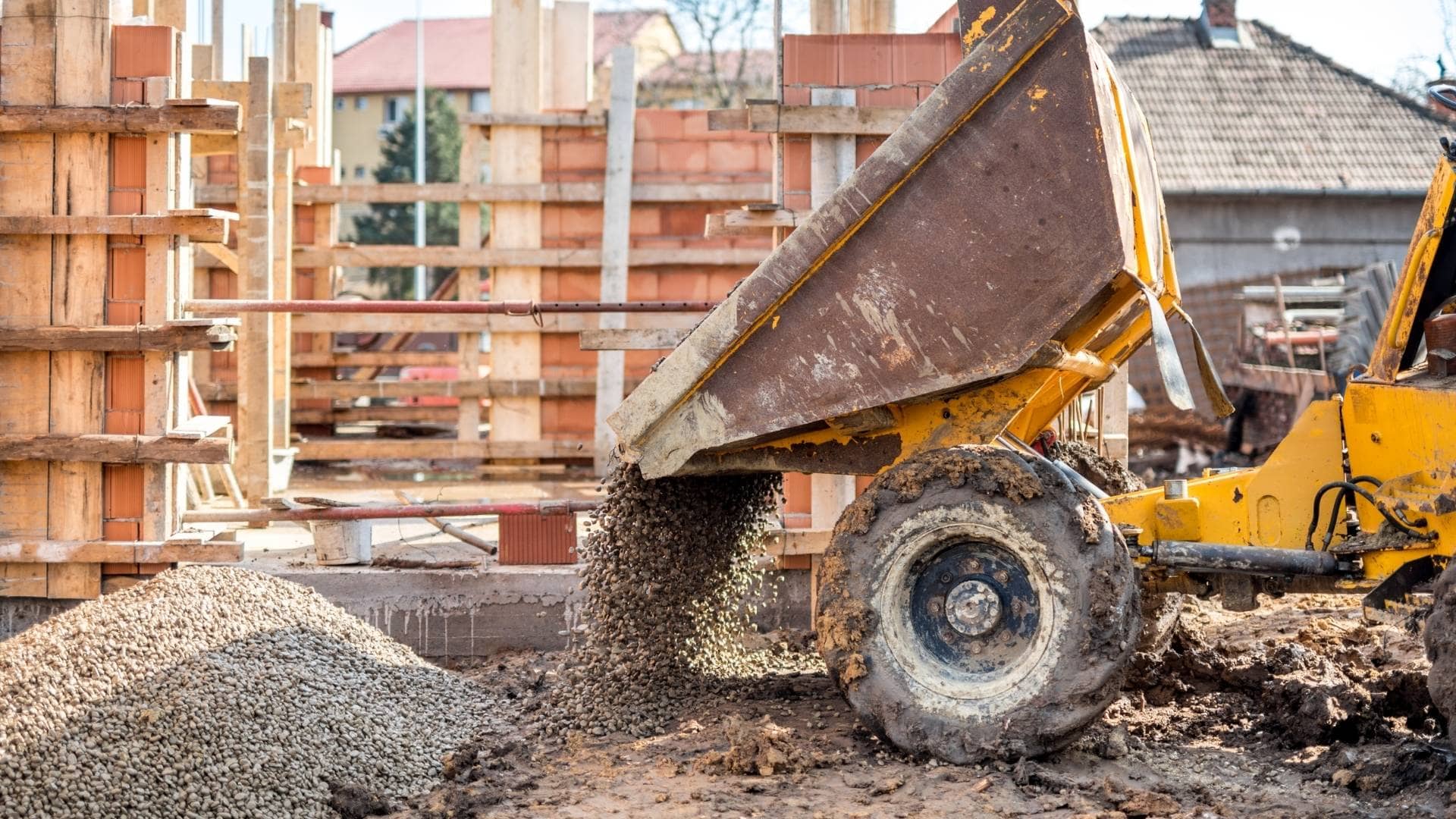
Calculate the material from m3 to tons
Unit conversions on construction sites: Do you know how much a cube of gravel weighs?
Estimating the amount of material needed is essential when planning a project. Whether you are ordering stone for a base under a concrete pavement, or for example gravel for drainage, you must tell the supplier how many tons to deliver. If you overshoot the number unnecessarily, you will be left with a pile of extra material on the construction site. If, on the other hand, you order too little, you will lose money due to additional shipping costs. Learn how to convert tons of aggregate to cubic meters (m3) and order as much material as you actually need.
Calculate m3 per kg instantly
The weight of the aggregate also depends on its fraction
Unit conversions on construction sites are always a bit tricky. If you do not know the fraction of the gravel, it is difficult to estimate the weight of a cubic meter of material. A cubic meter of the rock from which the aggregate is produced can weigh over 2.5 tons. However, when it is crushed, air gaps are created between the individual grains. The larger they are, the lower the aggregate weight per m3.
With gravel of a large fraction, larger air gaps occur, so the weight per cubic meter is lower than in the case of smaller fractions of aggregate made from the same type of rock. The weight also affects the type of stone and how it is poured. Shaken aggregate has approximately 20% more weight than loose aggregate.
Tractor for builders: conversion of tons to m3 according to material
If you want to calculate the required amount of bulk material as accurately as possible, contact the aggregate seller, who will provide you with accurate information about the volume and bulk weight of the material offered. If you don't want to bother with calculations, start from practice and average values. The calculations will be made easier by a simple calculator that we have prepared for you:
| A type of bulk material | Approximate weight of 1 m3 (t) |
| Mortar and concrete sand | 1,45 |
| Duck for decorative sprinkles | 1,5 |
| A gross duck for drainage | 1,55 |
| Gravel 0/4 | 1,65 |
| Crushed stone 0/63 | 1,8 |
| Grit 16/32 | 1,4 |
| Grit 32/64 | 1,45 |
| Grit 63/125 | 1,5 |
| Quarry Stone 200/500 | 1,8 |
| Quarry Stone 300/1200 | 2,1 |
Example: Material calculation in practice
Are you confused by the pile of numbers above? Let's show a practical example of how to calculate the necessary amount of aggregate in a moment. Let's say you need to create a decorative strip of decorative duckweed in your garden. The aggregate strip will be 1 meter wide and 10 meters long. The optimal backfill thickness will be around 5 cm. In the first step, calculate the area volume:
V = a * b * c
V = 1 * 10 * 0,05 = 0,5 m3
According to the table, 1 m3 of decorative duck has a weight of 1.5 tons. According to the volume calculation, we only need 0.5 cubic meters, i.e. 0.75 tons. We will therefore need approximately 750 kg of aggregate to make a decorative stone strip in the garden.
Count on a reserve, as a result you will save
Whether you order sand, gravel or aggregate, always count with a reserve of at least 10% compared to the calculated values. If you use gravel as a substrate for paving, you will definitely compact it. After compaction, the gravel "sits" by more than a tenth of the thickness of the layer. Therefore, order when compacting the aggregate layer 20 to 25% more material. If you underestimate the deviations in the calculation, the purchase will be more expensive for you. You have to pay the transport costs twice - and you know that this is not a small amount.

Miscalculating when purchasing material can cost you tens of thousands more. It is better to check the details from the supplier and not to solve it quickly on the knee.
Thanks to Stavario, you always have a tow truck at hand
You and your employees can use our table with coefficients for individual types of aggregate in your company. At the same time, you can easily have it at hand. Just upload the table to Stavario, where everyone on your team can conveniently find and use it.
Tip: Stavario makes possible to easily add notes and documents. You can assign access to uploaded documents to all employees in bulk, so they can quickly access them directly from the construction site.
You will appreciate Stavario even when you miscalculated and ordered too many building materials that remained unused on the construction site. Within a moment in the online interface you will createa request for the transfer of material to another building, or you will propose another possibility of use. Thanks to this, you will not lose money and the material will not roll anywhere lose value.
Try Stavario for 2 weeks for free
Automatic help will guide you through the demo version or arrange an online presentation from our sales representative.





